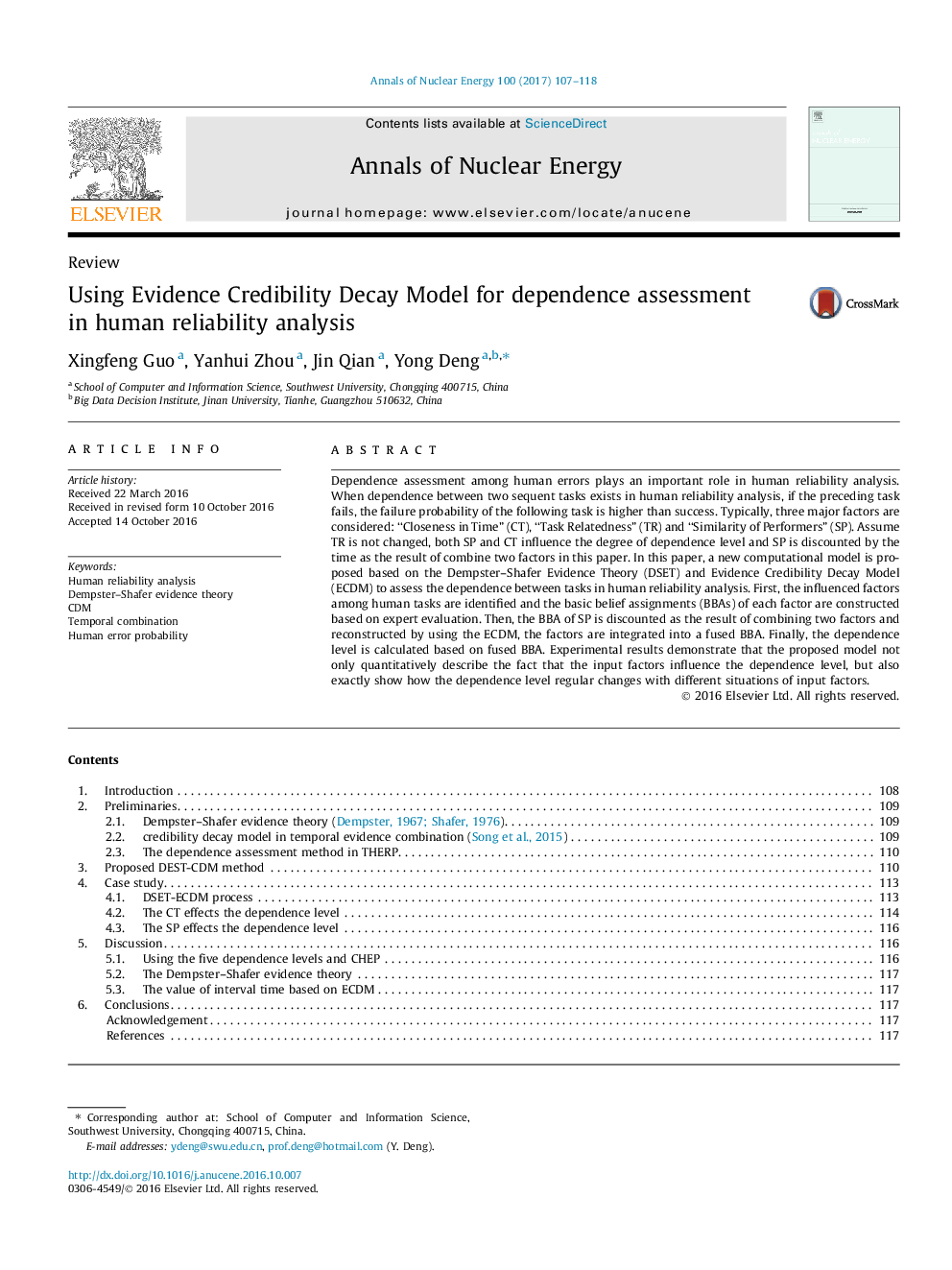| Article ID | Journal | Published Year | Pages | File Type |
|---|---|---|---|---|
| 5475355 | Annals of Nuclear Energy | 2017 | 12 Pages |
Abstract
Dependence assessment among human errors plays an important role in human reliability analysis. When dependence between two sequent tasks exists in human reliability analysis, if the preceding task fails, the failure probability of the following task is higher than success. Typically, three major factors are considered: “Closeness in Time” (CT), “Task Relatedness” (TR) and “Similarity of Performers” (SP). Assume TR is not changed, both SP and CT influence the degree of dependence level and SP is discounted by the time as the result of combine two factors in this paper. In this paper, a new computational model is proposed based on the Dempster-Shafer Evidence Theory (DSET) and Evidence Credibility Decay Model (ECDM) to assess the dependence between tasks in human reliability analysis. First, the influenced factors among human tasks are identified and the basic belief assignments (BBAs) of each factor are constructed based on expert evaluation. Then, the BBA of SP is discounted as the result of combining two factors and reconstructed by using the ECDM, the factors are integrated into a fused BBA. Finally, the dependence level is calculated based on fused BBA. Experimental results demonstrate that the proposed model not only quantitatively describe the fact that the input factors influence the dependence level, but also exactly show how the dependence level regular changes with different situations of input factors.
Related Topics
Physical Sciences and Engineering
Energy
Energy Engineering and Power Technology
Authors
Xingfeng Guo, Yanhui Zhou, Jin Qian, Yong Deng,
